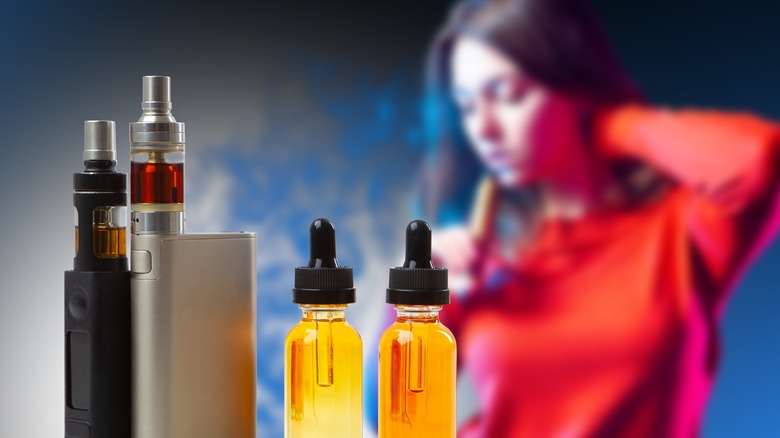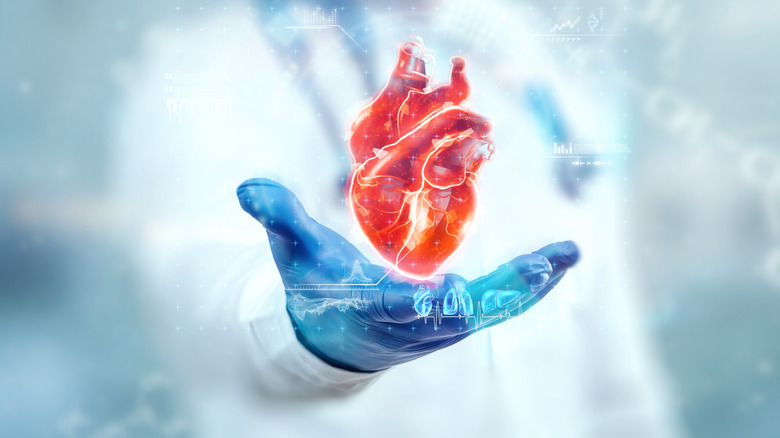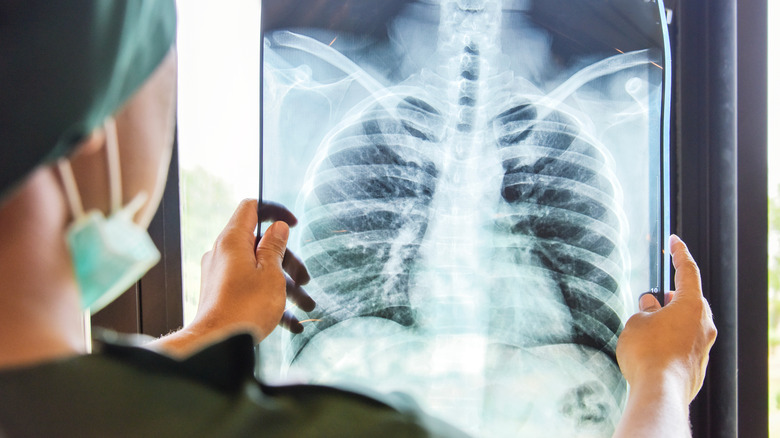Can You Get Lung Cancer From Vaping?
For many years, cigarettes were a popular way to smoke tobacco. However, the usage of cigarettes has dropped dramatically through the decades as the negative health effects of the product have come to light. As of 2020, about 14% of men and 11% of women smoked cigarettes. Overall, smoking among adults had come down over 8% since 2005, according to the U.S. Centers for Disease Control and Prevention (CDC). Yet every generation has its vice and for young men and women, that vice is vaping.
Vaping is a process by which someone uses a battery-operated device to inhale an aerosol that usually contains nicotine, flavoring, and other chemicals, explains the National Institute on Drug Abuse. Some of these devices can be as small as a USB stick. A liquid is heated in the device until it becomes vapor. This process is very popular not only for consuming nicotine but also for marijuana oil.
It's estimated that 3.3% of middle school and 14.1% of high school students use vaping devices, with the vast majority of them (85%) inhaling flavored vapor, according to the U.S. Food and Drug Administration (FDA). More than a quarter of users said they did it on a daily basis, while 4 in 10 reported vaping at least 20 out of the prior 30 days. Given these statistics, it's clear that vaping is a popular alternative to smoking among young people. But are the dangers of vaping similar to that of cigarettes? Can you get lung cancer from these devices?
Smoking and vaping have similar cardiovascular effects
With the technology, colors, and flavors surrounding vaping devices, it may seem to many young people that vaping is the healthier alternative to smoking cigars or cigarettes. However, research has shown that the two actually cause similar health effects, especially cardiovascularly.
Both cigarettes and vaping devices cause what is known as endothelial dysfunction or difficulty in widening the blood vessels to provide sufficient blood to the heart and the rest of the body. According to one 2022 study published in Arteriosclerosis, Thrombosis, and Vascular Biology, endothelial dysfunction was caused by cigarettes and vape aerosol, regardless of method, flavoring, or chemical. Although, the more nicotine that was given to rats, the less their blood vessels widened.
The study showed that it's not necessarily what someone is inhaling, but rather that the person is inhaling any irritant at all in the first place. "We were surprised to discover that it's not a specific foreign material being inhaled that causes harmful cardiovascular effects. It's the fact that some kind of irritant is being inhaled in the first place, regardless of what it was," Matthew L. Springer, Ph.D., the lead researcher of the study, said to Healthline. "All inhaled products are likely to have similar harmful effects on vascular function."
Vaping can cause lung disease
Now that it has been shown that smoking and vaping have similar cardiovascular effects, what does that mean regarding lung cancer? While it's too early to discern whether any link exists between vaping and lung cancer (per Riverside), it does turn out that vape aerosols are linked to another type of lung disease called "popcorn lung."
Some vape flavorings — specifically one called "diacetyl," which tastes like butter — can cause lung diseases according to WebMD. Inhaling diacetyl can cause permanent scarring in the small branches of your airways, making breathing difficult. Popcorn lung also has no lasting cure, meaning the victim may deal with coughing, wheezing, chest pain, and shortness of breath for an extended period of time even after they stop vaping, explains Johns Hopkins Medicine. Other common substances found in e-liquid that can cause lung problems are formaldehyde and acrolein.
Many pediatricians are now asking their patients about their use of vaping to help them predict certain lung problems in the future, according to Yale Medicine.



